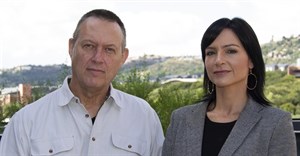Subscribe & Follow
Trending

 Woolworths sees over 20% drop in annual earningsAby Jose Koilparambil
Woolworths sees over 20% drop in annual earningsAby Jose Koilparambil



Jobs
- Research Sales Executive Johannesburg
- Research Intern Johannesburg
- Product Planner Johannesburg
Power of OOH underestimated
An average message uplift of 13% or almost three times the baseline awareness was achieved in four media experiments carried out recently on different OOH media in Gauteng in a survey of 1600 people visiting Sandton City and Menlyn Shopping Centre in February and March this year. These results were achieved after an average of only three weeks' flighting and represent a part of the potential that these four media could have, had the flighting time been longer.
"The results show scientifically that people absorb and are able to recall even an arbitrary message in advertising in shopping malls and their surrounds," said Ken Varejes of Primedia Unlimited, who instigated the experiments. Neil Higgs of TNS added, "These were particularly stringent experiments as they used cognitive messages - whereas most brand advertising also works at a deeper, more emotive level. This means that the results, good as they are, are still an underestimate of the media's true potential."
Results
Primedia Unlimited flighted four dummy messages in and around Sandton City and Menlyn Shopping Centre - two were in the restrooms of the two centres telling people that Brazil would host the 2014 FIFA Soccer World Cup. The other two placed in the malls, parkades and in a few surrounding roads had split messages - in Sandton, people were told that Tiger Woods' real name is Eldrick Woods and in Menlyn, the message was "David Beckam's second names are Robert Joseph.
Brazil recall
At each centre, 400 people were interviewed (as they left the centre) prior to the flighting to establish a baseline of knowledge. Three weeks later, another 400 people were interviewed at each centre (also as they left) to establish the message uplift. The results were impressive, especially given the cognitive nature of the message and the short period of flighting:
- Sandton
- Pre-exposure - 33% awareness
- Post-exposure - 49% awareness
- Increase of 16 percentage points (or a 48% improvement on the baseline)
- Pre-exposure - 33% awareness
- Menlyn
- Pre-exposure - 20% awareness
- Post-exposure - 32% awareness
- Increase of 12 percentage points (or a 60% improvement on the baseline)
- Pre-exposure - 20% awareness
Real names
- Sandton
- Pre-exposure - 3% awareness
- Post-exposure - 15% awareness
- Increase of 12 percentage points (or a 400% improvement on the baseline)
- Pre-exposure - 3% awareness
- Menlyn
- Pre-exposure - 0% awareness
- Post-exposure - 7% awareness of both names and a 12% awareness of at least one name
- Increase of seven percentage points for both names and 12 percentage points for at least one name.
- Pre-exposure - 0% awareness
The Menlyn results are particularly interesting given that the message had two parts to it - the power of simplicity in OOH advertising is clear.
TNS used its in-home GIS database to geo-code the people interviewed to establish each shopping centre's approximate catchment area. From this, it is possible to estimate the likely actual number of people who are able to recall the message (the message uplift). The results make for interesting reading:

Other findings
In a completely separate research study with a sample of 2000 metropolitan dwellers, also in February, people were asked to associate a set of attributes with a variety of media types. From this, TNS constructed a "noticeability index" running from zero to one hundred. OOH media in general scored highly on this index, with large billboards at 61.7 topping the list. In terms of the media used in the experiments, ads inside malls were second on this index, ads in shopping mall parkades were seventh and ads in public restrooms were eleventh. The full results are given below:
Conclusions
These results are an underestimate of the three media's true potential since the flighting time was quite short and the message was one that had to be absorbed and recalled cognitively. Further, the Brazil creative was all in capital letters, making it less easy to read. In addition, the experiments attracted some word-of-mouth attention that led to additional discussions on talk radio stations - another spin-off showing the power of content. Gordon Muller has compared the costs calculated with comparable data from Millward Brown and has concluded that the cost per thousand for spontaneous TV ad brand recall is about double that of the Tiger Woods/David Beckham communications.
These experiments mirrored a similar experiment carried out in 1989 by the Cape Town City Council and TNS using messages on the city's buses. These carried a dummy message as well as messages for two brands not then available in South Africa. The fleet of buses used was very extensive and the messages were flighted for three months. They garnered average message uplift of 24 percentage points or around double the baseline awareness, showing the power of longer flighting times.
For more details, contact Neil Higgs on +27 (0) 11 778 7500 or +27 (0) 82 376 6312 or go to www.tnsresearchsurveys.co.za.











